Lidofix 2% ADR Injection
$20.00 – $150.00Price range: $20.00 through $150.00
| Pack Size | Price | Price / Unit | Quantity | |
|---|---|---|---|---|
| 1 Bottle | $20.00 | $20.00/ unit | ||
| 5 Bottles | $90.00 | $18.00/ unit | ||
| 10 Bottles | $150.00 | $15.00/ unit |
Want to order in bulk / B2B price ? | Send Inquiry |


| SKU | 11036 |
| Manufacturer | Varenyam Healthcare Pvt Ltd |
| Categories | Anesthesia |
| Delivery Time | 10 - 14 Working Days |
Introduction to Lidofix 2% ADR Injection
Lidofix 2% ADR Adrenaline Injection is a local anesthetic. It is used to anaesthetize or numb the surgical area during small surgical operations including dental, oral, diagnostic, or other therapeutic treatments. It is manufactured by Varenyam Healthcare Pvt Ltd.
Lidofix 2% Adrenaline Injection must be administered by healthcare professionals. It assists in carrying out a painless treatment by momentarily numbing the surgical area and preventing pain signals from reaching the brain.
There are rarely any negative side effects associated with this medication. In some people, nevertheless, it could result in injection site reactions like pain, edema, and redness. These are often minor and transient. Consult your doctor right away if the numbness or other side effects at the injection site persist.
Before using Lidofix 2% Adrenaline Injection, it is very important to tell your doctor if you have any underlying heart disease or are taking medicines for heart rhythm problems. Ask your doctor for advice if you are pregnant or breastfeeding. Also, the medicine may cause dizziness. So avoid driving or operating heavy machinery while on medication.
Uses of Lidofix 2% ADR Injection
- Lidofix 2% ADR Injection is used as a local anesthetic.
- It provides pain relief during various medical procedures.
- Lidofix 2% ADR Injection contains lidocaine, a local anesthetic agent.
- It is commonly used for dental procedures, dermatological surgeries, suturing, and minor surgical interventions.
- Lidofix 2% ADR Injection blocks nerve impulses, leading to temporary numbness and pain relief.
- The injection formulation ensures rapid onset of action and effective anesthesia.
- It is administered by healthcare professionals via local infiltration or regional nerve block techniques.
- Lidofix 2% ADR Injection may also contain adrenaline (epinephrine) to enhance vasoconstriction and hemostasis.
- Lidofix 2% ADR Injection is typically well-tolerated, but patients should be monitored for potential adverse effects.
- It is contraindicated in patients with a history of allergies to lidocaine or adrenaline and in certain medical conditions.
- Lidofix 2% ADR Injection should be stored according to the manufacturer’s instructions and disposed of properly.
- Patients experiencing adverse effects while using Lidofix 2% ADR Injection should seek medical attention promptly.
Benefits
Lidofix 2% Adrenaline Injection is a local anesthetic. Your skin becomes numb from it. It functions by obstructing your body’s nerve messages. It will lessen the discomfort that could be brought on by invasive medical procedures like surgery, needle punctures, or the placement of a catheter or breathing tube. It is often highly safe, works very quickly, and is very effective.
How Does Lignox 2% A Injection 30 ml work?
Lignox 2% A Injection 30 ml contains Lidocaine and Adrenaline. Lidocaine blocks the influx of sodium ions into the membrane that surrounds the nerves, thereby preventing initiation and conduction of impulses (nerve signal). Hence, it gives an anesthetic effect and decreases the sensation of pain. Adrenaline works by constricting and narrowing blood vessels by acting on alpha receptors that cause muscle contractions. Thus, it decreasing the bleeding and the effects of Lignox 2% A Injection 30 ml will last longer.
Side Effects Lidofix 2% ADR Injection
Common side effects
- Nausea or vomiting
- Dizziness
- Headache
- Tingling or numbness
- Tremors
- Blurred vision
Serious Side Effects
- Severe allergic reactions (anaphylaxis)
- Seizures
- Cardiovascular effects
- Respiratory depression
- Methemoglobinemia
- CNS toxicity
Safety Advice
1. Alcohol
- You are recommended to avoid alcohol consumption while taking Lignox 2% A Injection 30 ml. Alcohol intake, along with Lignox 2% A Injection 30 ml, may cause increased drowsiness.
2. Pregnancy
- It is not recommended to take Lignox 2% A Injection 30 ml while you are pregnant. Please consult your doctor if you have any concerns regarding this, your doctor will prescribe you Lignox 2% A Injection 30 ml only if the benefits outweigh the risks.
3. Breast Feeding
- Please consult your doctor if you have any concerns regarding this, your doctor will decide whether breastfeeding mothers can take Lignox 2% A Injection 30 ml or not.
4. Driving
- Lignox 2% A Injection 30 ml may cause drowsiness and vision disturbances, do not drive or operate heavy machinery if you feel drowsy.
5. Liver
- Lignox 2% A Injection 30 ml should be used with caution in patients with liver impairment/liver disease. Dose adjustment may be needed. Please consult your doctor if you have a liver impairment or any concerns regarding this.
6. Kidney
- Lignox 2% A Injection 30 ml should be used with caution in patients with kidney impairment/kidney disease. Dose adjustment may be needed. Please consult your doctor if you have kidney impairment or any concerns regarding this.
7. Children
- Lignox 2% A Injection 30 ml should not be used by children, as the efficacy and safety have not been established.
FAQs – Frequently Asked Questions
1. Can I take duloxetine with Lidofix 2% ADR Injection 30 ml?
Ans. You are not recommended to take duloxetine (antidepressant) with Lidofix 2% A Injection 30 ml as co-administration of these two medicines may increase the risk of high blood pressure and heart rate. However, please consult your doctor before taking other medicines with Lignox 2% A Injection 30 ml.
2. Does Lidofix 2% ADR Injection 30 ml cause drowsiness?
Ans. Lidofix 2% A Injection 30 ml causes drowsiness and vision disturbances. So, drive only if you are alert and omit driving or operating machinery if you feel dizzy or drowsy.
3. I am over 65 years old; can I use Lidofix 2% ADR Injection?
Ans. A person of age 65 or older should use Lidofix 2% A Injection 30 ml with caution, as directed by the doctor as the chances of occurrence of side effects increase in older people.
| Pack Size | 1 Bottle, 10 Bottles, 5 Bottles |
|---|---|
| Price/Unit | $15/unit, $18/unit, $20/unit |
Be the first to review “Lidofix 2% ADR Injection” Cancel reply
Related Products
Anesthesia

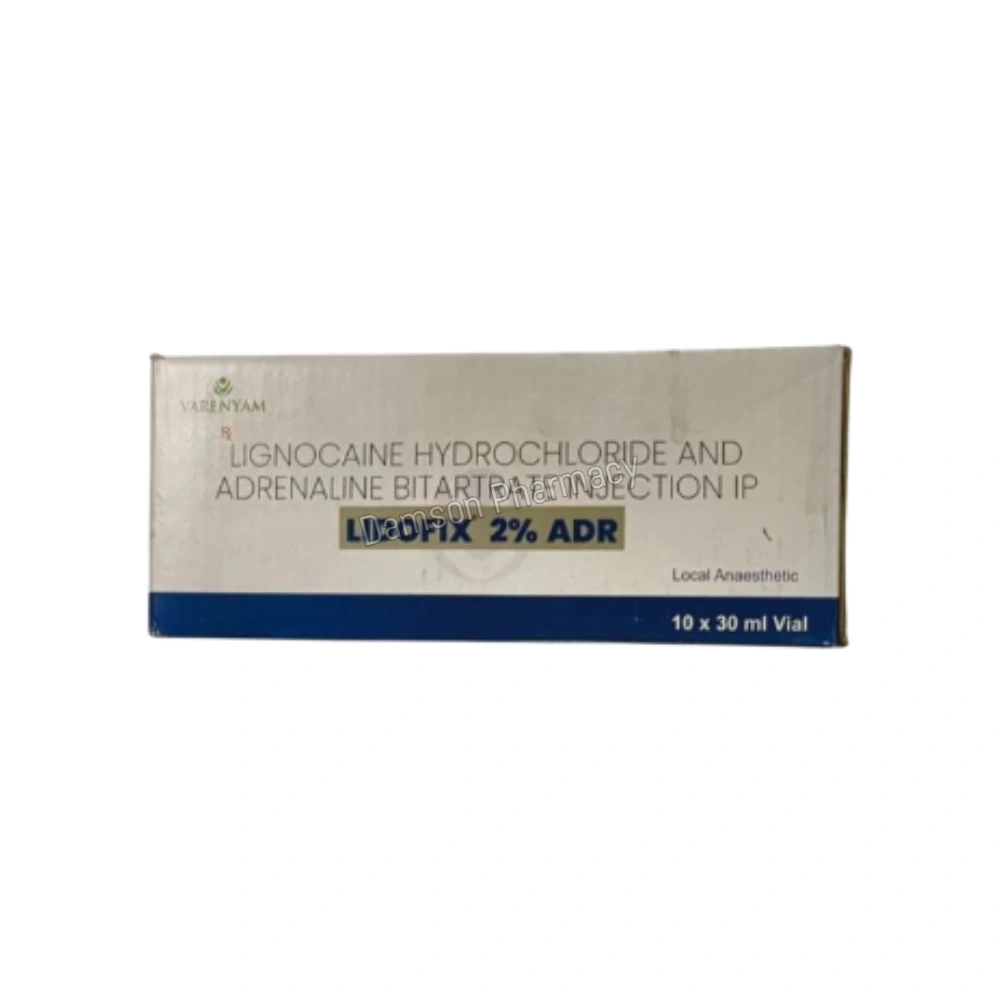
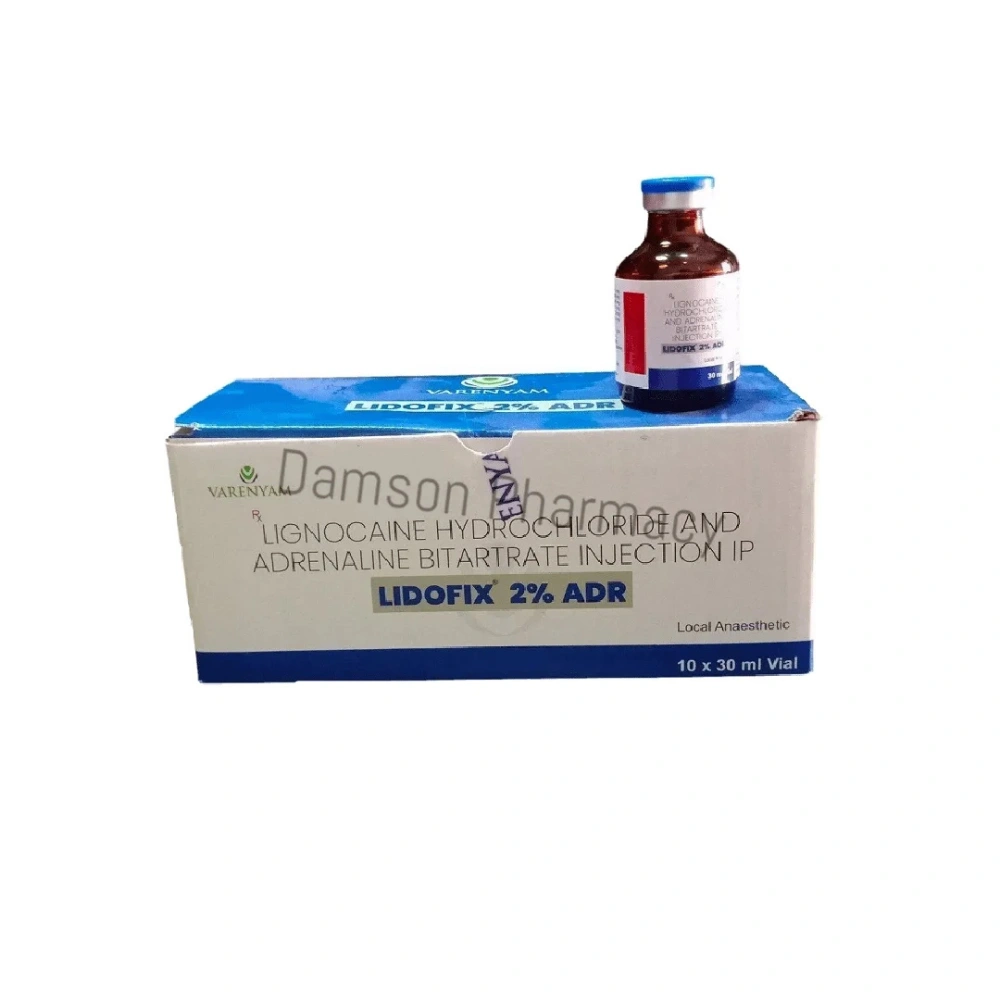
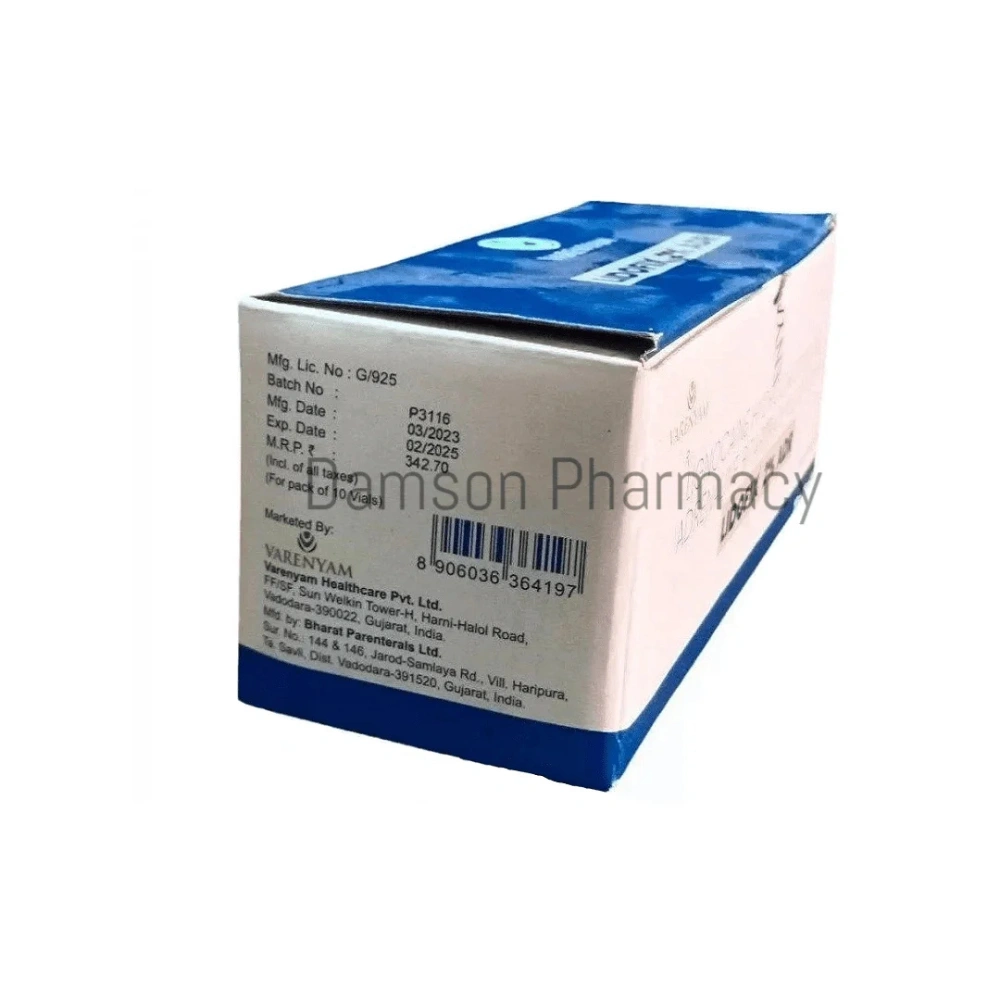
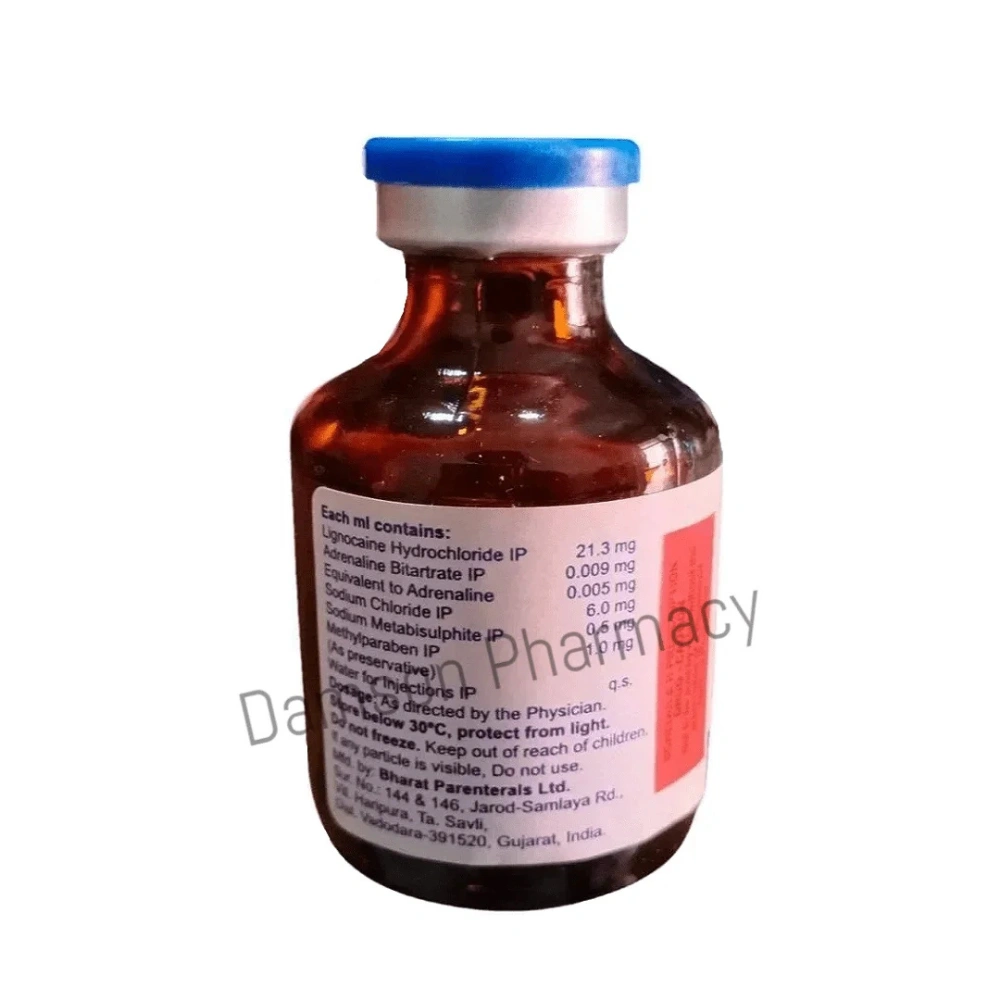
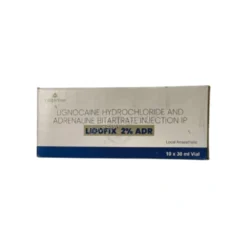
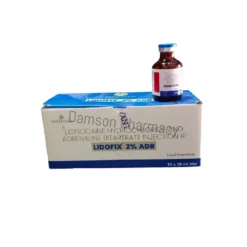
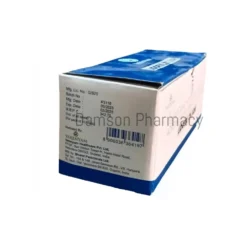
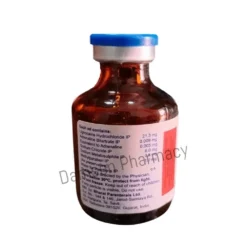
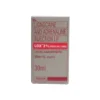
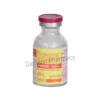
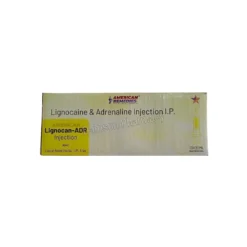
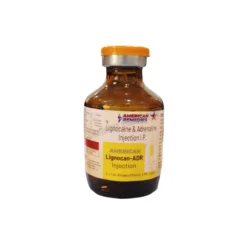
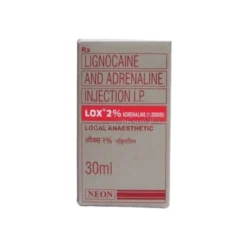

Reviews
There are no reviews yet.